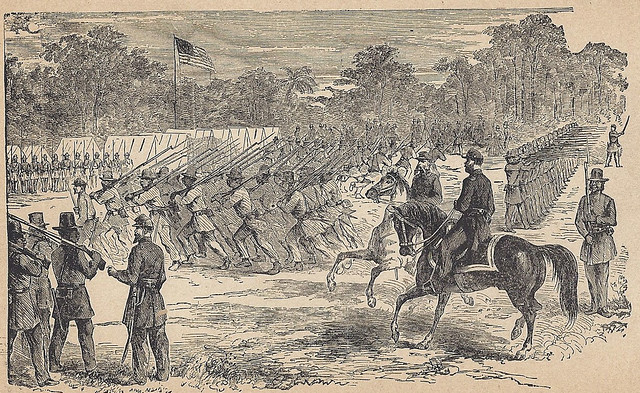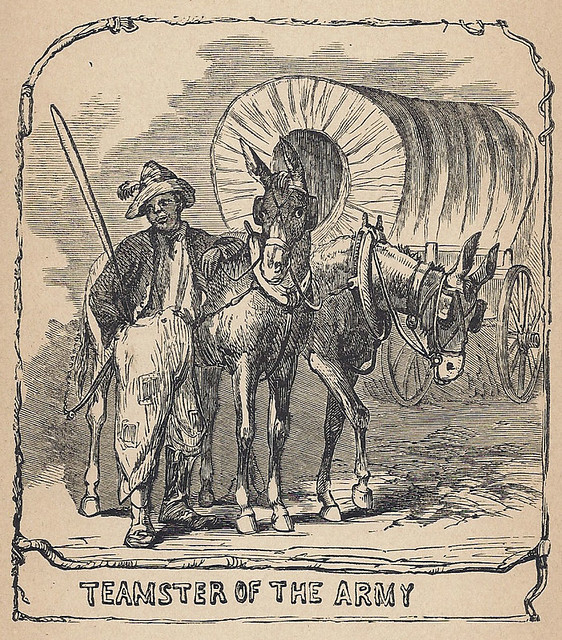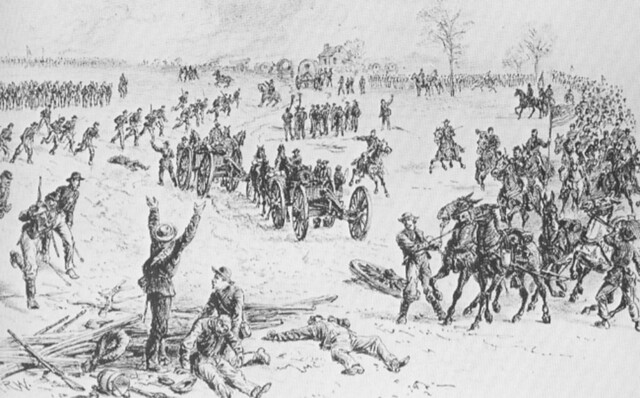Read Our Blogs
Black History Month: African Americans on Lee's Retreat, April 2-9, 18
Shared by Chris Calkins, as Guest Blogger.
Did Black troops serve in the Civil War as soldiers for the Confederacy?
In the spring of 1991, I had the pleasure of working with a consortium of representatives from seven counties and one city to discuss the possibility of establishing a driving tour following the final movement of the Civil War in Virginia, that being more commonly known as “Lee’s Retreat” or the Appomattox Campaign.
I was selected to write the narration and develop the tour route while others designed the medium used to tell the story. We ended up with twenty six stops, each having a radio station with a narrative available to the traveler by turning their car radio to 1610 AM on the dial.
The entire route, complete with pull offs and stations, was completed and dedicated in April 1995. Soon to be known as “Heritage Tourism,’ this novel idea was to be copied by other Civil War sites across the nation with “Lee’s Retreat” being the grandfather of them all. The driving tour was featured in LIFE and SOUTHERN LIVING magazines while the group would look at other methods of marketing itself. Wayside exhibits were soon added to the interpretive sites at each stop and various brochures, both advertising and informative, were soon produced along with a CD for purchase by individuals.
Along this line, I decided that a site bulletin on AFRICAN AMERICANS ON LEE’S RETREAT, April 1865” might be in order, this especially since I previously did one on AFRICAN AMERICANS AT PETERBURG for Petersburg National Battlefield which was well received and still in print. In each bulletin I would have one side dedicated to the story of African Americans in the Union army (known as United States Colored Troops or USCT’s) and on the opposite side those who served the Confederacy in some capacity.

Phalanx soldiers during a drill. Illustration from "The Black Phalanx: A History of the Negro Soldiers of the United States in the Wars of 1775-1812, 1861-’65."
In researching the material to be used in this brochure, I found that for the Union army the USCT’s were among the first to enter Petersburg when the city fell on April 2, 1865, which precipitated Lee’s army to evacuate both it and Richmond, thus beginning its westward retreat toward North Carolina. As Grant’s forces soon began their pursuit of Lee’s army, seven black units (approximately 2,000 men) would participate in the final campaign which would end at Appomattox Court House on April 9th. Just before the surrender took place here, troops were engaged in a final battle during which the USCTs were under fire for the last time in Virginia.
In dealing with the role of African Americans in the Confederacy, I came across material that today is somewhat controversial: did slaves and freedmen actually serve in the Confederate army and engage Union troops during final days of the war? To answer that question I had to go to a period newspaper, THE DAILY EXPRESS, published in Petersburg. It mentioned that on March 23, 1865, General Orders #14 was issued allowing the enlistment of Blacks into the Confederate service. The recruitment effort began almost immediately and was led by majors James W. Pegram and Thomas P. Turner who organized a “Negro brigade” of Confederate States Colored Troops.

African Americans troops severed as escorts for General G. W. Custis Lee's wagon trail in the role of teamsters. Illustration from "The Black Phalanx: A History of the Negro Soldiers of the United States in the Wars of 1775-1812, 1861-’65."
Although the war had only a couple of weeks before it ended, it appears the “Negro brigade” did see some combat as it accompanied Lee’s army on its retreat from Richmond. Serving as an escort to General G.W. Custis Lee’s wagon train apparently in the role of teamsters. Moving unmolested for the first couple of days, on April 5th the train was attacked by Union cavalry under General Henry Davies near the small hamlet of Painesville in Amelia County. A Confederate officer who rode upon the action remarked “The [Blacks] thus employed all wore good gray uniforms and I was informed that they belonged to the only company of colored troops in the Confederate service, having been enlisted by Major Turner in Richmond.” After a brief fight, the wagons were captured and destroyed while the guards were taken prisoner by the Federal cavalry.
Apparently Davies’ troopers thought the “colored troops” were actually teamsters as the general recorded in his report of the action at Painesville that he took 310 “teamsters” as prisoners from the wagon train attack. The next day a majority of Lee’s army was engaged with Grant’s forces in the Battle of Sailor’s Creek. Here he would lose the services of 7,700 men, along with eight Confederate generals including Custis Lee, all of whom were taken prisoner.

During an attack on a wagon train at Painesville in Amelia County, the wagons were captured and destroyed while the guards were taken prisoner by the Federal cavalry.
Eventually these captives would be marched back toward Petersburg where they would be sent to Northern prison camps from nearby City Point. Along the way, this column was observed by a Northern chaplain who remembered “The first instalment [sic] of Rebel prisoners, numbering seventeen hundred and seventy, have just passed, under a strong guard….In the squad were many negroes recently armed by Jef. Davis.”
When Lee surrendered his army at Appomattox, thirty-six African Americans were listed on the Confederate paroles. Most were either servants, free blacks, musicians, cooks, teamsters or blacksmiths.
The first-person accounts used to verify the use of Confederate colored troops in combat near Painesville, are just a few that I’ve come across since researching this particular aspect of the war. Many modern-day historians who deal with the story of Black troops in the Civil War will deny that African Americans actually served as soldiers for the Confederacy. It is fact that in March of 1865 Blacks were enlisted as soldiers in Richmond and, as shown here, did come under fire on April 5th near Painesville, even if they were acting as teamsters or armed guards on a wagon train.
Sailor's Creek Battlefield Historical State Park is on the National Register of Historical Places and listed as a National Historic Landmark.
The park is located at 6541 Saylers Creek Road, Rice, Va. From U.S. 460, take Route 617 (Saylers Creek Rd.) to Sailor’s Creek Battlefield State Park. From U.S. 360, take State Route 307 (connecting highway between U.S. 360 and U.S. 460) to Route 617 North (Saylers Creek Rd.).
Drive Time: Northern Virginia, three to three and a half hours; Richmond, one to one and a half hours; Tidewater/Norfolk/Virginia Beach, two and a half to three hours; Roanoke, two hours.
If you have read the article and have a question, please email nancy.heltman@dcr.virginia.gov.














